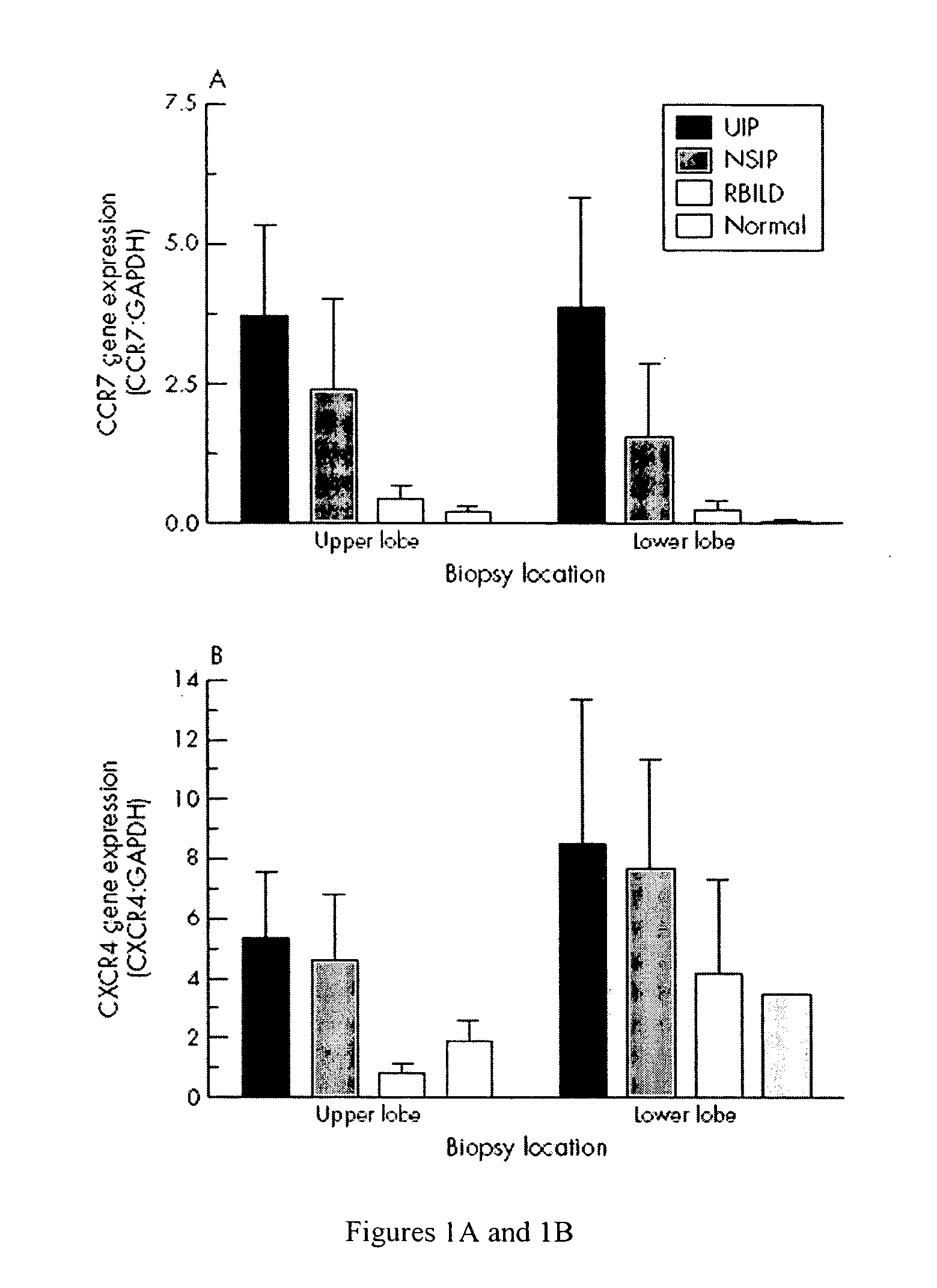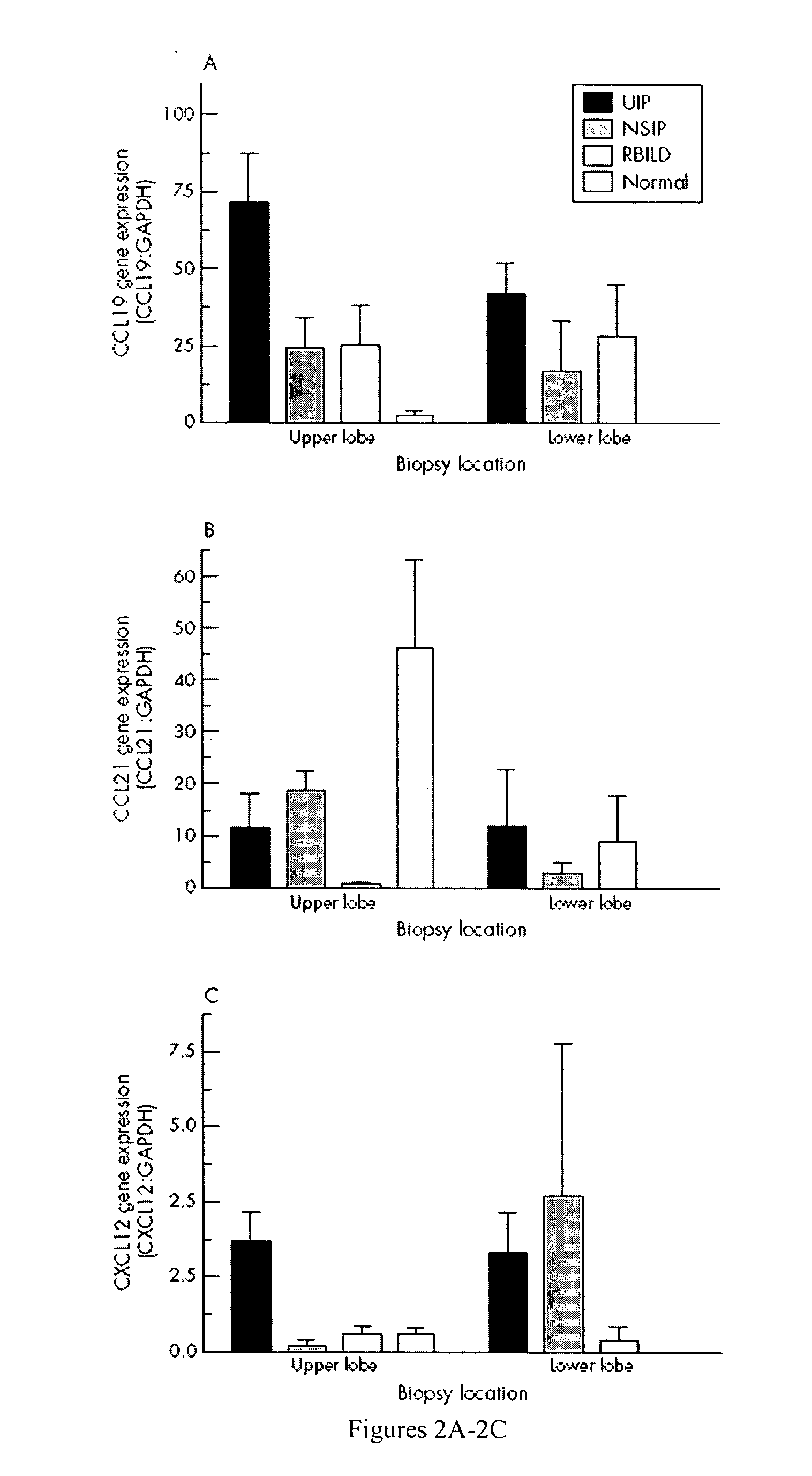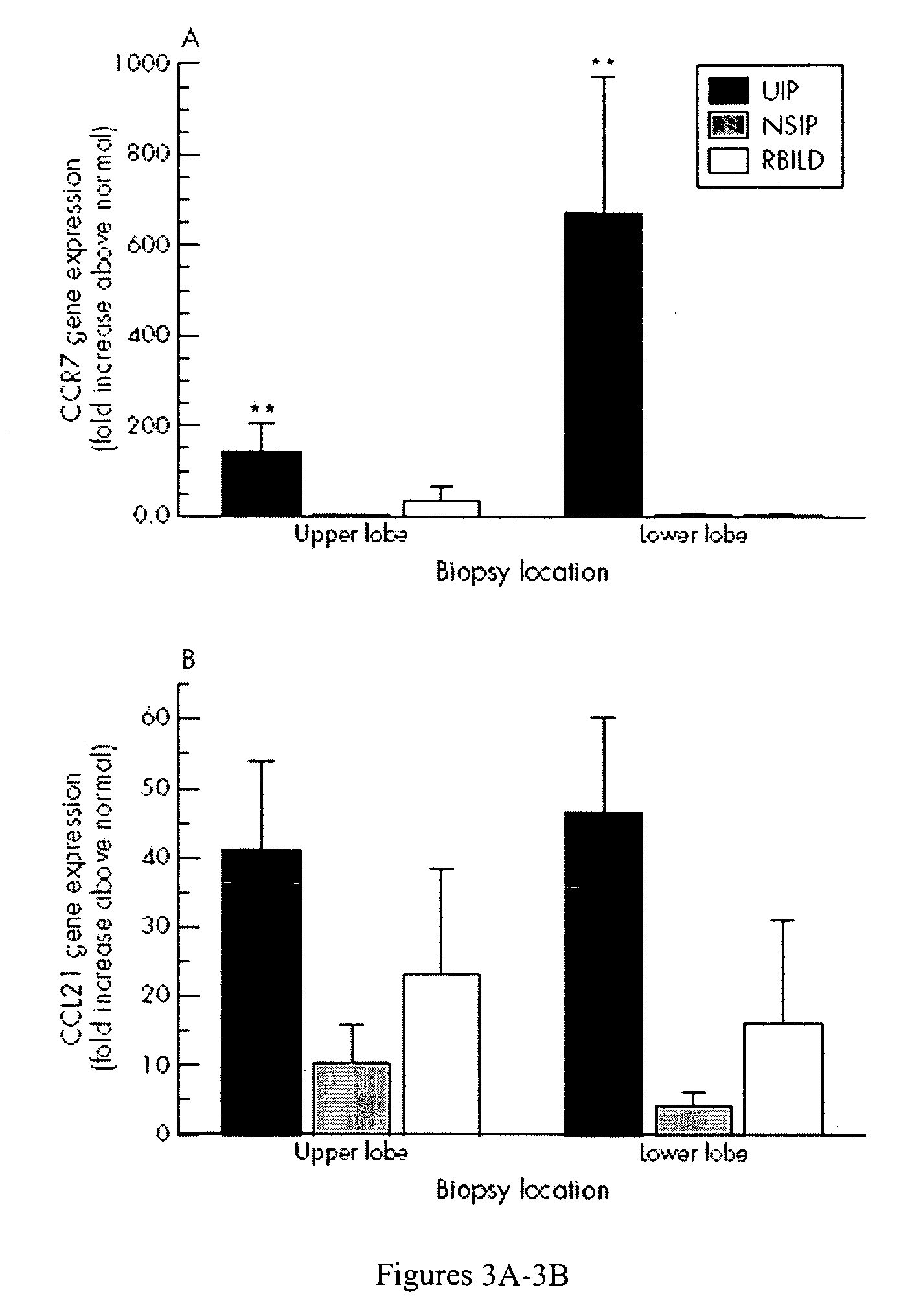Materials and methods for treating chronic fibrotic diseases
a technology for chronic fibrosis and materials, applied in the field of chronic fibrosis disorders, can solve the problems of inability to prevent respiratory failure, lack of effective clinical treatment for these diseases, and often inability to respond to medical treatment, so as to reduce the activity of ccl21, improve the symptoms of fibrosis, and reduce the presence of fibrotic lesions.
- Summary
- Abstract
- Description
- Claims
- Application Information
AI Technical Summary
Benefits of technology
Problems solved by technology
Method used
Image
Examples
example 1
Methods and Materials Used to Show Role of CCR7 in Interstitial Idiopathic Pneumonia
[0097] Patients suspected of having IIP, as determined from a compilation of clinical, physiological, radiographical, and pathological findings (Flaherty et al., Am. J. Med., 110:278-282 (2001); Flaherty et al., Curr. Opin. Pulm. Med., 6:404-410 (2000); Kazerooni et al., AJR Am. J. Roentgenol., 169:977-983 (1997); American Thoracic Society, European Respiratory Society (ATS / ERS), Am. J. Respir. Crit. Care Med., 165:277-304 (2002)). None of the patients enrolled in the present study had undergone previous biopsy surgery or received treatment for IIP. SLBs were performed as part of the evaluation for the University of Michigan Specialized Center of Research in the pathobiology of fibrotic lung disease between May 2000 and August 2004. Histologically normal lung biopsies with no pathological evidence of disease were obtained from the distant margins of resected specimens in patients undergoing thoraci...
example 3
Targeting CCL19 or CCL21 for Treatment of Chronic Fibrosing Disorders
[0118] This Example details the novel potential in targeting CCL19 and / or CCL21 during chronic fibrosis in the lung. Chronic pulmonary fibrosis of known and idiopathic origin presents extraordinary clinical challenges for which treatment options show limited effectiveness or toxicity (Flaherty et al., Am. J. Med., 110:278-282 (2001); Hampton et al., Am. J. Respir. Crit. Care Med., 149:A878 (1994)), and the median survival rate following diagnosis has changed little (Ryu et al., Mayo Clin. Proc., 73:1085-1101 (1998); Lasky et al., Environ. Health Perspect., 108 Suppl 4:751-762 (2000)). Known profibrotic stimuli include radiation, inhaled mineral and organic particles, gaseous oxidants, pharmaceutics and infectious organisms, whereas debate persists regarding the identity of etiological factors that initiate the clinicopathologic entities of idiopathic interstitial pneumonias (IIP). IIP are a diverse group of disor...
example 4
Targeting CCL21 or CCR7 is Effective to Abrogate Pulmonary Fibrosis Induced by Adoptive Transfer of Human Pulmonary Fibroblasts in Immunodeficient Mice.
[0126] As discussed above, CC chemokine receptor 7 (CCR7) is expressed in IIP biopsies and primary fibroblast lines. In the present example, there are provided details of a study of the in vivo role of CCR7 in a model of pulmonary fibrosis. Briefly, 1.0×106 primary fibroblasts grown from idiopathic pulmonary fibrosis / usual interstitial pneumonia (EPF / UIP), non-specific interstitial pneumonia (NSIP), or histologically normal biopsies were injected intravenously into C.B.-17SCID / beige (bg) mice. At days 35 and 63 after IPF / UIP fibroblast injection, patchy interstitial fibrosis, and increased hydroxyproline were present in the lungs of immunodeficient mice. Adoptively transferred NSIP fibroblasts caused a more diffuse interstitial fibrosis and increased hydroxyproline levels at both times but injected normal human fibroblasts did not ...
PUM
| Property | Measurement | Unit |
|---|---|---|
| pH | aaaaa | aaaaa |
| thick | aaaaa | aaaaa |
| SEM | aaaaa | aaaaa |
Abstract
Description
Claims
Application Information
 Login to View More
Login to View More - R&D
- Intellectual Property
- Life Sciences
- Materials
- Tech Scout
- Unparalleled Data Quality
- Higher Quality Content
- 60% Fewer Hallucinations
Browse by: Latest US Patents, China's latest patents, Technical Efficacy Thesaurus, Application Domain, Technology Topic, Popular Technical Reports.
© 2025 PatSnap. All rights reserved.Legal|Privacy policy|Modern Slavery Act Transparency Statement|Sitemap|About US| Contact US: help@patsnap.com



